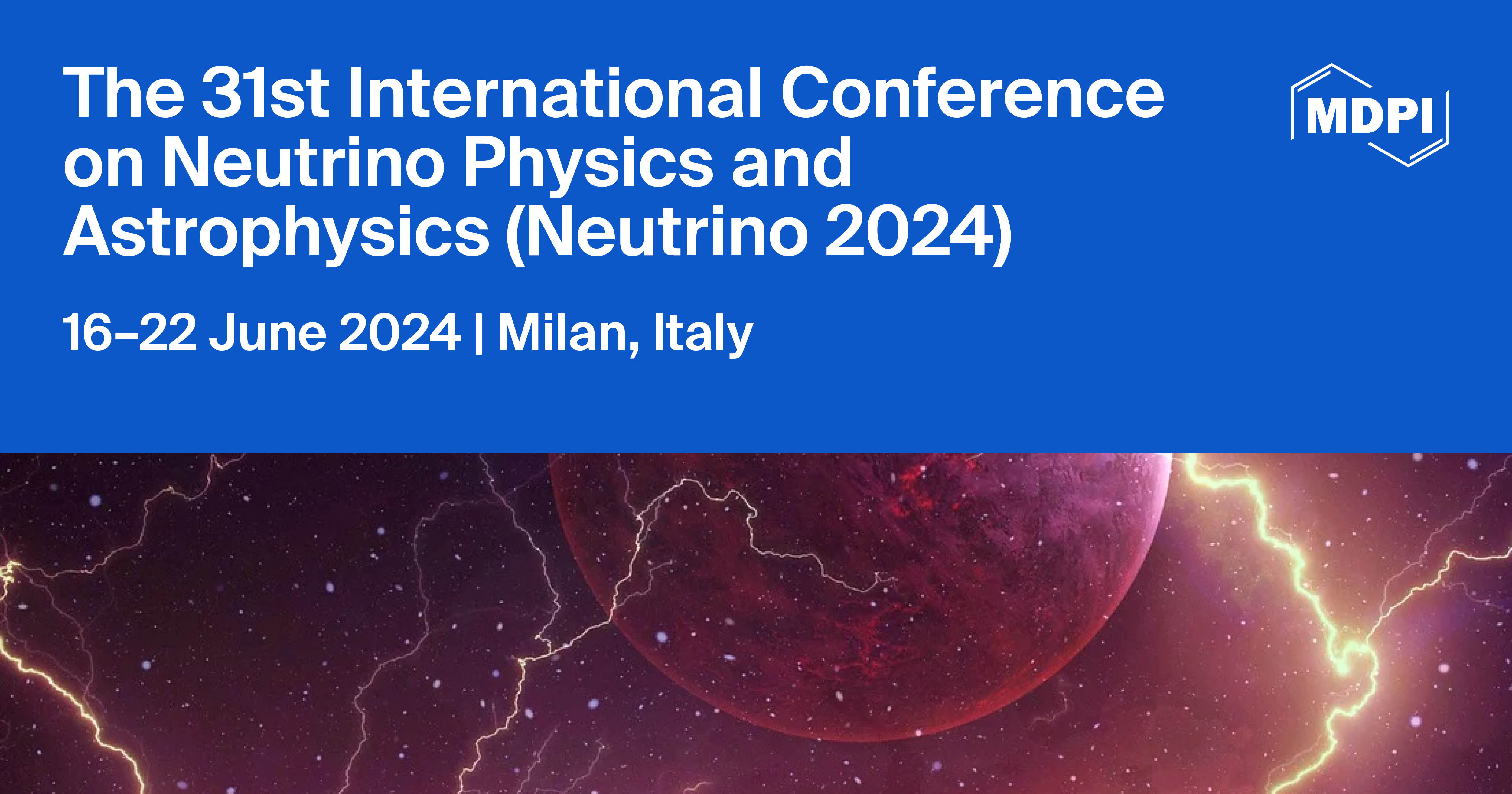Journal Description
Atoms
Atoms
is an international, peer-reviewed, open access journal on all aspects of the atom published monthly online by MDPI.
- Open Access— free for readers, with article processing charges (APC) paid by authors or their institutions.
- High Visibility: indexed within Scopus, ESCI (Web of Science), Astrophysics Data System, Inspec, CAPlus / SciFinder, INSPIRE, and other databases.
- Journal Rank: CiteScore - Q2 (Nuclear and High Energy Physics)
- Rapid Publication: manuscripts are peer-reviewed and a first decision is provided to authors approximately 23.3 days after submission; acceptance to publication is undertaken in 3.9 days (median values for papers published in this journal in the second half of 2023).
- Recognition of Reviewers: reviewers who provide timely, thorough peer-review reports receive vouchers entitling them to a discount on the APC of their next publication in any MDPI journal, in appreciation of the work done.
Impact Factor:
1.8 (2022);
5-Year Impact Factor:
1.8 (2022)
Latest Articles
Atomic Models of Dense Plasmas, Applications, and Current Challenges
Atoms 2024, 12(4), 26; https://doi.org/10.3390/atoms12040026 - 17 Apr 2024
Abstract
Modeling plasmas in terms of atoms or ions is theoretically appealing for several reasons. When it is relevant, the notion of atom or ion in a plasma provides us with an interpretation scheme of the plasma’s internal functioning. From the standpoint of quantitative
[...] Read more.
Modeling plasmas in terms of atoms or ions is theoretically appealing for several reasons. When it is relevant, the notion of atom or ion in a plasma provides us with an interpretation scheme of the plasma’s internal functioning. From the standpoint of quantitative estimation of plasma properties, atomic models of plasma allow one to extend many theoretical tools of atomic physics to plasmas. This notably includes the statistical approaches to the detailed accounting for excited states, or the collisional-radiative modeling of non-equilibrium plasmas, which is based on the notion of atomic processes. This paper is focused on the theoretical challenges raised by the atomic modeling of dense, non-ideal plasmas. It is intended to give a synthetic and pedagogical view on the evolution of ideas in the field, with an accent on the theoretical consistency issues, rather than an exhaustive review of models and experimental benchmarks. First we make a brief, non-exhaustive review of atomic models of plasmas, from ideal plasmas to strongly-coupled and pressure-ionized plasmas. We discuss the limitations of these models and pinpoint some open problems in the field of atomic modeling of plasmas. We then address the peculiarities of atomic processes in dense plasmas and point out some specific issues relative to the calculation of their cross-sections. In particular, we discuss the modeling of fluctuations, the accounting for channel mixing and collective phenomena in the photoabsorption, or the impact of pressure ionization on collisional processes.
Full article
(This article belongs to the Special Issue Atomic Physics in Dense Plasmas)
►
Show Figures
Open AccessArticle
Bond Rearrangement Produces Oxygen from Carbon Dioxide
by
Kamal Kumar, Jibak Mukherjee, Harpreet Singh and Deepankar Misra
Atoms 2024, 12(4), 25; https://doi.org/10.3390/atoms12040025 - 17 Apr 2024
Abstract
We present a direct observation where fragmentation of the
We present a direct observation where fragmentation of the
(This article belongs to the Section Atomic, Molecular and Nuclear Spectroscopy and Collisions)
►▼
Show Figures

Figure 1
Open AccessArticle
Theoretical Spectra of Lanthanides for Kilonovae Events: Ho I-III, Er I-IV, Tm I-V, Yb I-VI, Lu I-VII
by
Sultana N. Nahar
Atoms 2024, 12(4), 24; https://doi.org/10.3390/atoms12040024 - 17 Apr 2024
Abstract
The broad emission bump in the electromagnetic spectra observed following the detection of gravitational waves created during the kilonova event of the merging of two neutron stars in August 2017, named GW170817, has been linked to the heavy elements of lanthanides (Z =
[...] Read more.
The broad emission bump in the electromagnetic spectra observed following the detection of gravitational waves created during the kilonova event of the merging of two neutron stars in August 2017, named GW170817, has been linked to the heavy elements of lanthanides (Z = 57–71) and a new understanding of the creation of heavy elements in the r-process. The initial spectral emission bump has a wavelength range of 3000–7000 Å, thus covering the region of ultraviolet (UV) to optical (O) wavelengths, and is similar to those seen for lanthanides. Most lanthanides have a large number of closely lying energy levels, which introduce extensive sets of radiative transitions that often form broad regions of lines of significant strength. The current study explores these broad features through the photoabsorption spectroscopy of 25 lanthanide ions, Ho I-III, Er I-IV, Tm I-V, Yb I-VI, and Lu I-VII. With excitation only to a few orbitals beyond the ground configurations, we find that most of these ions cover a large number of bound levels with open
(This article belongs to the Special Issue Photoionization of Atoms)
►▼
Show Figures

Figure 1
Open AccessPerspective
Laser and Astrophysical Plasmas and Analogy between Similar Instabilities
by
Stjepan Lugomer
Atoms 2024, 12(4), 23; https://doi.org/10.3390/atoms12040023 - 16 Apr 2024
Abstract
Multipulse laser–matter interactions initiate nonlinear and nonequilibrium plasma fluid flow dynamics and their instability creating microscale vortex filaments, loop-soliton chains, and helically paired structures, similar to those at the astrophysical mega scale. We show that the equation with the Hasimoto structure describes both,
[...] Read more.
Multipulse laser–matter interactions initiate nonlinear and nonequilibrium plasma fluid flow dynamics and their instability creating microscale vortex filaments, loop-soliton chains, and helically paired structures, similar to those at the astrophysical mega scale. We show that the equation with the Hasimoto structure describes both, the creation of loop solitons by torsion of vortex filaments and the creation of solitons by helical winding of magnetic field lines in the Crab Nebula. Our experiments demonstrate that the breakup of the loop solitons creates vortex rings with (i) quasistatic toroidal Kelvin waves and (ii) parametric oscillatory modes—i.e., with the hierarchical instability order. For the first time, we show that the same hierarchical instability at the micro- and the megascale establishes the conceptual frame for their unique classification based on the hierarchical order of Bessel functions. Present findings reveal that conditions created in the laser-target regions of a high filament density lead to their collective behavior and formation of helically paired and filament-braided “complexes”. We also show, for the first time, that morphological and topological characteristics of the filament-bundle “complexes” with the loop solitons indicate the analogy between similar laser-induced plasma instabilities and those of the Crab and Double-Helix Nebulas—thus enabling conceptualization of fundamental characteristics. These results reveal that the same rotating metric accommodates the complexity of the instabilities of helical filaments, vortex rings, and filament jets in the plasmatic micro- and megascale astrophysical objects.
Full article
(This article belongs to the Special Issue Plasma Physics Highlights: Non-equilibrium Dynamics, Interfaces and Mixing)
►▼
Show Figures

Figure 1
Open AccessArticle
Enhancement of the NORAD-Atomic-Data Database in Plasma
by
Sultana N. Nahar and Guillermo Hinojosa-Aguirre
Atoms 2024, 12(4), 22; https://doi.org/10.3390/atoms12040022 - 09 Apr 2024
Abstract
We report recent enhancements to the online atomic database at the Ohio State University, NORAD-Atomic-Data, that provide various parameters for radiative and collisional atomic processes dominant in astrophysical plasma. NORAD stands for Nahar Osu RADiative. The database belongs to the data sources, especially
[...] Read more.
We report recent enhancements to the online atomic database at the Ohio State University, NORAD-Atomic-Data, that provide various parameters for radiative and collisional atomic processes dominant in astrophysical plasma. NORAD stands for Nahar Osu RADiative. The database belongs to the data sources, especially for the latest works, of the international collaborations of the Opacity Project and the Iron Project. The contents of the database are calculated values for energies, oscillator strengths, radiative decay rates, lifetimes, cross-sections for photoionization, electron-ion recombination cross-sections, and recombination rate coefficients. We have recently expanded NORAD-Atomic-Data with several enhancements over those reported earlier. They are as follows: (i) We continue to add energy levels, transition parameters, cross-sections, and recombination rates for atoms and ions with their publications. (ii) Recently added radiative atomic data contain a significant amount of transition data for photo-absorption spectral features corresponding to the X-ray resonance fluorescence effect, showing prominent wavelength regions of bio-signature elements, such as phosphorus ions, and emission bumps of heavy elements, such as of lanthanides, which may be created in a kilonova event. We are including (iii) collisional data for electron-impact-excitation, (iv) experimental data for energies and oscillator strengths for line formation, (v) experimental cross-sections for photoionization that can be applied for benchmarking and other applications, and (vi) the introduction of a web-based interactive feature to calculate spectral line ratios at various plasma temperature and density diagnostics, starting with our recently published data for P II. We presented a summary description of theoretical backgrounds for the computed data in the earlier paper. With the introduction of experimental results in the new version of NORAD, we present a summary description of measurement of high-resolution photoionization cross-sections at an Advanced Light Source of LBNL synchrotron set-up and briefly discuss other set-ups. These additions should make NORAD-Atomic-Data more versatile for various applications. For brevity, we provide information on the extensions and avoid repetition of data description of the original paper.
Full article
(This article belongs to the Section Atomic, Molecular and Nuclear Spectroscopy and Collisions)
►▼
Show Figures
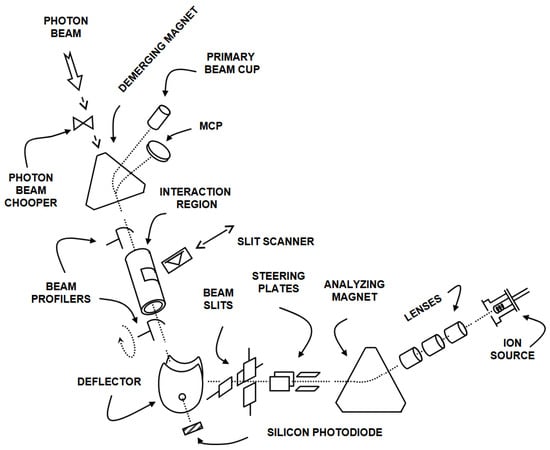
Figure 1
Open AccessReview
Laser-Induced Breakdown Spectroscopy in Biological Samples: A Review of Experiments with Soft Tissues
by
Javier Manrique, Pedro Garrido and Joaquín Velasco
Atoms 2024, 12(4), 21; https://doi.org/10.3390/atoms12040021 - 01 Apr 2024
Abstract
►▼
Show Figures
This article reviews the advances made during the past two decades in the application of Laser-Induced Breakdown Spectroscopy (LIBS) to biological samples, specifically soft tissues (both animal and human). The first sections include a historical overview and a summary of the biomedical relevance
[...] Read more.
This article reviews the advances made during the past two decades in the application of Laser-Induced Breakdown Spectroscopy (LIBS) to biological samples, specifically soft tissues (both animal and human). The first sections include a historical overview and a summary of the biomedical relevance of analyzing metals in these tissues. Next, statistical methods employed in some works are presented, along with a detailed description of the innovations developed in experimental systems. The remainder of the review reports the approaches used in the experiments, focusing on a description of the advances that have enabled the successful application of LIBS to soft tissues. The results are evaluated, and the major challenges remaining for this type of sample are discussed. The aim of this review is to provide useful information that encourages future research on LIBS for biological samples.
Full article
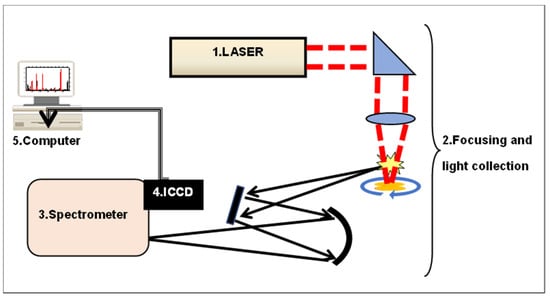
Figure 1
Open AccessArticle
CollisionDB: A New Database of Atomic and Molecular Collisional Processes with an Interactive API
by
Christian Hill, Dipti, Kalle Heinola and Martin Haničinec
Atoms 2024, 12(4), 20; https://doi.org/10.3390/atoms12040020 - 27 Mar 2024
Abstract
The Atomic and Molecular Data Unit of the International Atomic Energy Agency has developed a new database, CollisionDB, to provide an open, free, robust and long-term repository of data on plasma collisional processes. The database contains data on cross sections and rate coefficients
[...] Read more.
The Atomic and Molecular Data Unit of the International Atomic Energy Agency has developed a new database, CollisionDB, to provide an open, free, robust and long-term repository of data on plasma collisional processes. The database contains data on cross sections and rate coefficients for collisions of electrons, photons and heavy particles with atomic and molecular species. A fundamental requirement for this database is the implementation of standardized metadata, which provide an unambiguous description of the collisional data available in peer-reviewed sources. CollisionDB offers both a browser-based search interface and an application programming interface (API) that allows users to filter, process and compare collisional datasets. For this purpose, a Python package PyCollisionDB has been developed to access the CollisionDB API. Here, we present an overview of the technical developments, including data schemas, standards and user interface underlying the CollisionDB application, with particular emphasis on the API developed to support the integration of data into modeling and other codes.
Full article
(This article belongs to the Section Atomic, Molecular and Nuclear Spectroscopy and Collisions)
►▼
Show Figures

Figure 1
Open AccessArticle
Line Shape Code Comparison of the Effect of Periodic Fields on Hydrogen Lines
by
Ibtissem Hannachi, Spiros Alexiou and Roland Stamm
Atoms 2024, 12(4), 19; https://doi.org/10.3390/atoms12040019 - 22 Mar 2024
Abstract
►▼
Show Figures
Spectral line shapes code in plasmas (SLSPs) code comparison workshops have been organized in the last decade with the aim of comparing the spectra obtained with independently developed analytical and numerical models. Here, we consider the simultaneous effect of a plasma microfield and
[...] Read more.
Spectral line shapes code in plasmas (SLSPs) code comparison workshops have been organized in the last decade with the aim of comparing the spectra obtained with independently developed analytical and numerical models. Here, we consider the simultaneous effect of a plasma microfield and a periodic electric field on the hydrogen lines Lyman-α, Lyman-β, Balmer-α, and Balmer-β for plasma conditions where the Stark effect usually dominates line broadening.
Full article
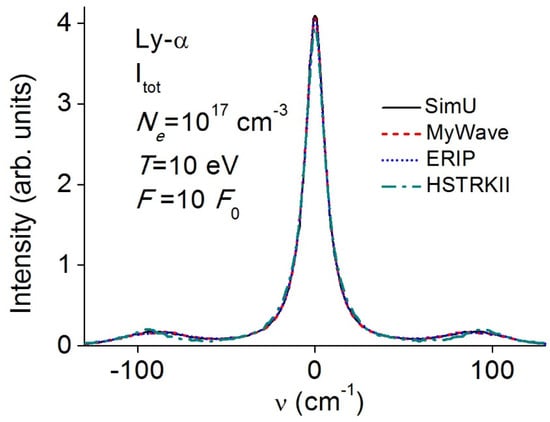
Figure 1
Open AccessArticle
EWS Time Delay in Low Energy e−C60 Elastic Scattering
by
Aiswarya R., Rasheed Shaik, Jobin Jose, Hari R. Varma and Himadri S. Chakraborty
Atoms 2024, 12(3), 18; https://doi.org/10.3390/atoms12030018 - 21 Mar 2024
Abstract
Access to time delay in a projectile-target scattering is a fundamental tool in understanding their interactions by probing the temporal domain. The present study focuses on computing and analyzing the Eisenbud-Wigner-Smith (EWS) time delay in low energy elastic
Access to time delay in a projectile-target scattering is a fundamental tool in understanding their interactions by probing the temporal domain. The present study focuses on computing and analyzing the Eisenbud-Wigner-Smith (EWS) time delay in low energy elastic
(This article belongs to the Section Atomic, Molecular and Nuclear Spectroscopy and Collisions)
►▼
Show Figures

Figure 1
Open AccessCommunication
General Aspects of Line Shapes in Plasmas in the Presence of External Electric Fields
by
Spiros Alexiou
Atoms 2024, 12(3), 17; https://doi.org/10.3390/atoms12030017 - 15 Mar 2024
Abstract
The present paper discusses a number of topics relevant to line broadening in the presence of periodic oscillatory fields. Specifically, we discuss the applicablility of the expression usually employed to compute the autocorrelation function, the dressing, accounting for random phases, neglecting fine structure
[...] Read more.
The present paper discusses a number of topics relevant to line broadening in the presence of periodic oscillatory fields. Specifically, we discuss the applicablility of the expression usually employed to compute the autocorrelation function, the dressing, accounting for random phases, neglecting fine structure and numerical issues associated with stiffnes.
Full article
(This article belongs to the Special Issue Plasma Spectroscopy and Plasma Diagnostics: From Classical to Sophisticated Methods)
►▼
Show Figures
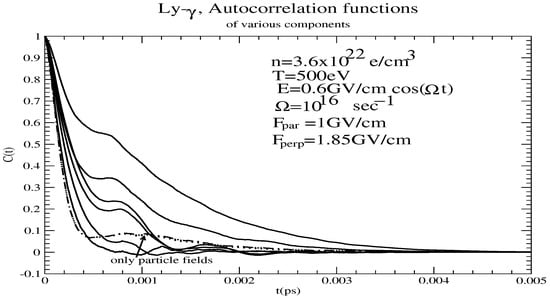
Figure 1
Open AccessArticle
Simulation of Extreme Ultraviolet Radiation and Conversion Efficiency of Lithium Plasma in a Wide Range of Plasma Situations
by
Xiangdong Li, Frank B. Rosmej and Zhanbin Chen
Atoms 2024, 12(3), 16; https://doi.org/10.3390/atoms12030016 - 12 Mar 2024
Abstract
Based on the detailed term accounting approach, the relationship between extreme ultraviolet conversion efficiency and plasma conditions, which range from 5 to 200 eV for plasma temperature and from 4.63 × 1017 to 4.63 × 1022 cm−3 for plasma density,
[...] Read more.
Based on the detailed term accounting approach, the relationship between extreme ultraviolet conversion efficiency and plasma conditions, which range from 5 to 200 eV for plasma temperature and from 4.63 × 1017 to 4.63 × 1022 cm−3 for plasma density, is studied for lithium plasmas through spectral simulations involving very extended atomic configurations, including a benchmark set of autoionizing states. The theoretical limit of the EUV conversion efficiency and its dependence on sustained plasma time are given for different plasma densities. The present study provides the necessary understanding of EUV formation from the perspective of atomic physics and also provides useful knowledge for improving EUV conversion efficiency with different technologies.
Full article
(This article belongs to the Special Issue Atomic Physics in Dense Plasmas)
►▼
Show Figures

Figure 1
Open AccessBrief Report
Continuous Acceleration Sensing Using Optomechanical Droplets
by
Gordon R. M. Robb, Josh G. Walker, Gian-Luca Oppo and Thorsten Ackemann
Atoms 2024, 12(3), 15; https://doi.org/10.3390/atoms12030015 - 06 Mar 2024
Abstract
We show that a Bose–Einstein Condensate illuminated by a far off-resonant optical pump field and its retroreflection from a feedback mirror can produce stable, localised structures known as optomechanical droplets. We show that these droplets could be used to measure the acceleration of
[...] Read more.
We show that a Bose–Einstein Condensate illuminated by a far off-resonant optical pump field and its retroreflection from a feedback mirror can produce stable, localised structures known as optomechanical droplets. We show that these droplets could be used to measure the acceleration of a BEC via continuous monitoring of the position of the droplet via the optical intensity distribution.
Full article
(This article belongs to the Special Issue Cold and Rydberg Atoms for Quantum Technologies)
►▼
Show Figures

Figure 1
Open AccessArticle
Prospective Optical Lattice Clocks in Neutral Atoms with Hyperfine Structure
by
Tobias Bothwell
Atoms 2024, 12(3), 14; https://doi.org/10.3390/atoms12030014 - 05 Mar 2024
Abstract
Optical lattice clocks combine the accuracy and stability required for next-generation frequency standards. At the heart of these clocks are carefully engineered optical lattices tuned to a wavelength where the differential AC Stark shift between ground and excited states vanishes—the so called ‘magic’
[...] Read more.
Optical lattice clocks combine the accuracy and stability required for next-generation frequency standards. At the heart of these clocks are carefully engineered optical lattices tuned to a wavelength where the differential AC Stark shift between ground and excited states vanishes—the so called ‘magic’ wavelength. To date, only alkaline-earth-like atoms utilizing clock transitions with total electronic angular momentum
(This article belongs to the Special Issue High-Precision Laser Spectroscopy)
►▼
Show Figures
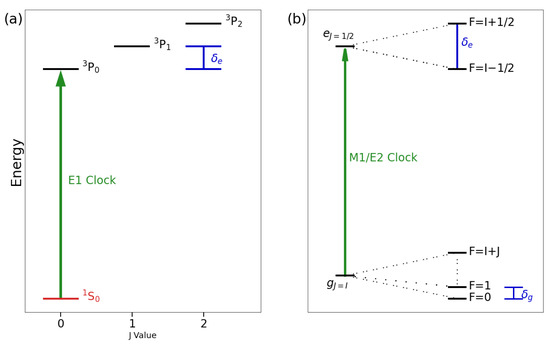
Figure 1
Open AccessArticle
Energy Levels and Transition Data of Cs VI
by
Abid Husain, Haris Kunari and Tauheed Ahmad
Atoms 2024, 12(3), 13; https://doi.org/10.3390/atoms12030013 - 27 Feb 2024
Abstract
►▼
Show Figures
Previously reported atomic data (spectral lines, wavelengths, energy levels, and transition probabilities) were collected and systematically analyzed for Cs VI. The present theoretical analysis was supported by extensive calculations made for Cs VI with a pseudo-relativistic Hartree–Fock (HFR) method together with the superposition
[...] Read more.
Previously reported atomic data (spectral lines, wavelengths, energy levels, and transition probabilities) were collected and systematically analyzed for Cs VI. The present theoretical analysis was supported by extensive calculations made for Cs VI with a pseudo-relativistic Hartree–Fock (HFR) method together with the superposition of configuration interactions implemented in Cowan’s codes. In this work, all previously reported energy levels and their (allowed) transition assignments were confirmed. A critically evaluated set of optimized energy levels with their uncertainties, observed and Ritz wavelengths along with their uncertainties, and theoretical transition probabilities with their estimated uncertainties were presented in the compilation. In addition to this, we determined the radiative transition parameters for several forbidden lines within the ground configuration
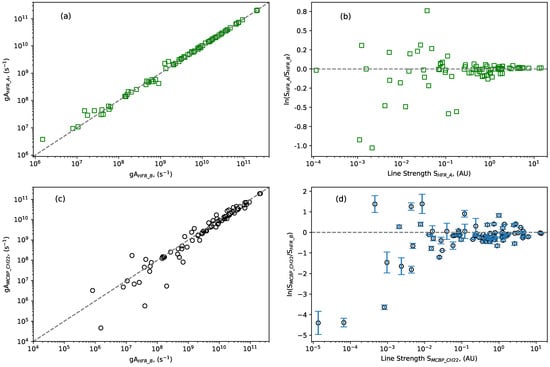
Figure 1
Open AccessTutorial
Long-Lived Levels in Multiply and Highly Charged Ions
by
Elmar Träbert
Atoms 2024, 12(3), 12; https://doi.org/10.3390/atoms12030012 - 23 Feb 2024
Abstract
Atoms and ions remain in some long-lived excited levels for much longer than in typical “normal” levels, but not forever. Various cases of this so-called metastability that occur in multiply or even highly charged ions are discussed in a tutorial review, as well
[...] Read more.
Atoms and ions remain in some long-lived excited levels for much longer than in typical “normal” levels, but not forever. Various cases of this so-called metastability that occur in multiply or even highly charged ions are discussed in a tutorial review, as well as examples of atomic lifetime measurements on such levels, their intentions, and some present and future applications.
Full article
(This article belongs to the Section Atomic, Molecular and Nuclear Spectroscopy and Collisions)
►▼
Show Figures
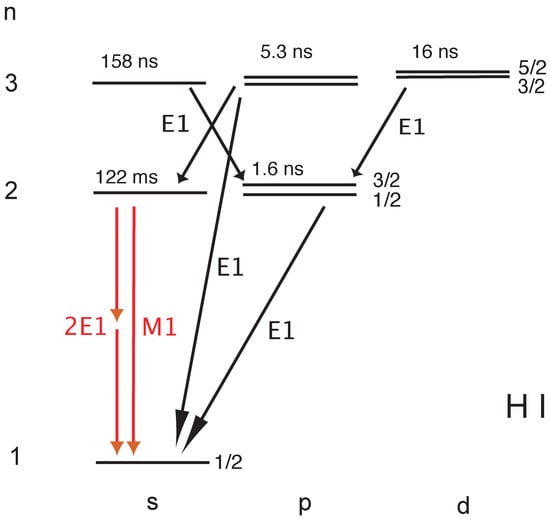
Figure 1
Open AccessArticle
Fe
by
Shilpa Shajan, Kandasamy Thirunavukkarsu, Vijayanand Chandrasekaran, Venkatesan S. Thimmakondu and Krishnan Thirumoorthy
Atoms 2024, 12(2), 11; https://doi.org/10.3390/atoms12020011 - 18 Feb 2024
Abstract
The singlet, triplet, and quintet electronic states of the Fe
The singlet, triplet, and quintet electronic states of the Fe
(This article belongs to the Section Quantum Chemistry, Computational Chemistry and Molecular Physics)
►▼
Show Figures

Figure 1
Open AccessArticle
Optical Extreme Learning Machines with Atomic Vapors
by
Nuno A. Silva, Vicente Rocha and Tiago D. Ferreira
Atoms 2024, 12(2), 10; https://doi.org/10.3390/atoms12020010 - 06 Feb 2024
Abstract
Extreme learning machines explore nonlinear random projections to perform computing tasks on high-dimensional output spaces. Since training only occurs at the output layer, the approach has the potential to speed up the training process and the capacity to turn any physical system into
[...] Read more.
Extreme learning machines explore nonlinear random projections to perform computing tasks on high-dimensional output spaces. Since training only occurs at the output layer, the approach has the potential to speed up the training process and the capacity to turn any physical system into a computing platform. Yet, requiring strong nonlinear dynamics, optical solutions operating at fast processing rates and low power can be hard to achieve with conventional nonlinear optical materials. In this context, this manuscript explores the possibility of using atomic gases in near-resonant conditions to implement an optical extreme learning machine leveraging their enhanced nonlinear optical properties. Our results suggest that these systems have the potential not only to work as an optical extreme learning machine but also to perform these computations at the few-photon level, paving opportunities for energy-efficient computing solutions.
Full article
(This article belongs to the Section Cold Atoms, Quantum Gases and Bose-Einstein Condensation)
►▼
Show Figures
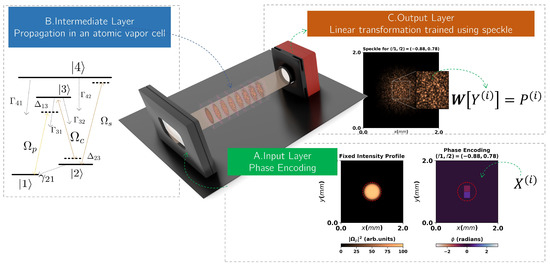
Figure 1
Open AccessFeature PaperArticle
Electron Capture from Molecular Hydrogen by Metastable Sn2+* Ions
by
Klaas Bijlsma, Lamberto Oltra, Emiel de Wit, Luc Assink, Ismanuel Rabadán, Luis Méndez and Ronnie Hoekstra
Atoms 2024, 12(2), 9; https://doi.org/10.3390/atoms12020009 - 01 Feb 2024
Abstract
Over a wide and partly overlapping energy range, the single-electron capture cross-sections for collisions of metastable
Over a wide and partly overlapping energy range, the single-electron capture cross-sections for collisions of metastable
(This article belongs to the Section Atomic, Molecular and Nuclear Spectroscopy and Collisions)
►▼
Show Figures
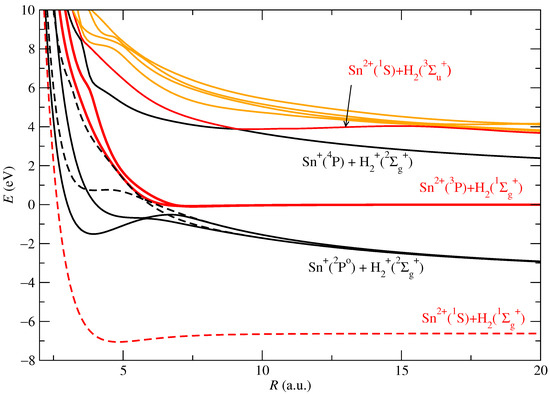
Figure 1
Open AccessReview
Progress in High-Precision Mass Measurements of Light Ions
by
Edmund G. Myers
Atoms 2024, 12(2), 8; https://doi.org/10.3390/atoms12020008 - 26 Jan 2024
Abstract
►▼
Show Figures
Significant advances in Penning trap measurements of atomic masses and mass ratios of the proton, deuteron, triton, helion, and alpha-particle have occurred in the last five years. These include a measurement of the mass of the deuteron against 12C with 8.5 ×
[...] Read more.
Significant advances in Penning trap measurements of atomic masses and mass ratios of the proton, deuteron, triton, helion, and alpha-particle have occurred in the last five years. These include a measurement of the mass of the deuteron against 12C with 8.5 × 10−12 fractional uncertainty; resolution of vibrational levels of H2+ as mass and the application of a simultaneous measurement technique to the H2+/D+ cyclotron frequency ratio, yielding a deuteron/proton mass ratio at 5 × 10−12; new measurements of HD+/3He+, HD+/T+, and T+/3He+ leading to a tritium beta-decay Q-value with an uncertainty of 22 meV, and atomic masses of the helion and triton at 13 × 10−12; and a new measurement of the mass of the alpha-particle against 12C at 12 × 10−12. Some of these results are in strong disagreement with previous values in the literature. Their impact in determining a precise proton/electron mass ratio and electron atomic mass from spectroscopy of the HD+ molecular ion is also discussed.
Full article

Figure 1
Open AccessArticle
Nanoparticle Interferometer by Throw and Catch
by
Jakub Wardak, Tiberius Georgescu, Giulio Gasbarri, Alessio Belenchia and Hendrik Ulbricht
Atoms 2024, 12(2), 7; https://doi.org/10.3390/atoms12020007 - 25 Jan 2024
Abstract
Matter wave interferometry with increasingly larger masses could pave the way to understanding the nature of wavefunction collapse, the quantum to classical transition, or even how an object in a spatial superposition interacts with its gravitational field. In order to improve upon the
[...] Read more.
Matter wave interferometry with increasingly larger masses could pave the way to understanding the nature of wavefunction collapse, the quantum to classical transition, or even how an object in a spatial superposition interacts with its gravitational field. In order to improve upon the current mass record, it is necessary to move into the nanoparticle regime. In this paper, we provide a design for a nanoparticle Talbot–Lau matter wave interferometer that circumvents the practical challenges of previously proposed designs. We present numerical estimates of the expected fringe patterns that such an interferometer would produce, considering all major sources of decoherence. We discuss the practical challenges involved in building such an experiment, as well as some preliminary experimental results to illustrate the proposed measurement scheme. We show that such a design is suitable for seeing interference fringes with
(This article belongs to the Special Issue Advances in and Prospects for Matter Wave Interferometry)
►▼
Show Figures
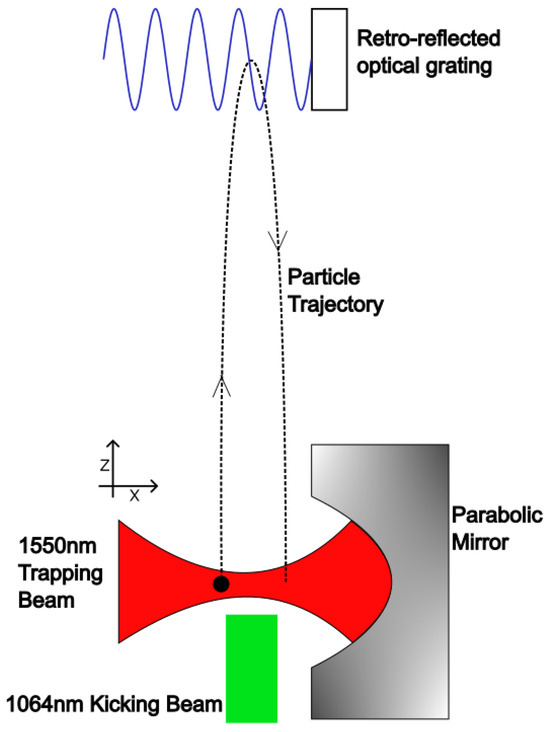
Figure 1
Highly Accessed Articles
Latest Books
E-Mail Alert
News
Topics

Conferences
Special Issues
Special Issue in
Atoms
Over a Century of Nuclear Isomers: Challenges and Prospects
Guest Editor: Adam R. VernonDeadline: 30 April 2024
Special Issue in
Atoms
Plasma Physics Highlights: Non-equilibrium Dynamics, Interfaces and Mixing
Guest Editor: Snezhana AbarzhiDeadline: 31 May 2024
Special Issue in
Atoms
Editorial Board Members’ Collection Series: Atomic Collision and Atomic Spectroscopy
Guest Editors: Michael Schulz, Jean-Christophe Pain, Karoly TokesiDeadline: 30 June 2024
Special Issue in
Atoms
Advances in Ion Trapping of Radioactive Ions
Guest Editor: Maxime BrodeurDeadline: 31 August 2024






